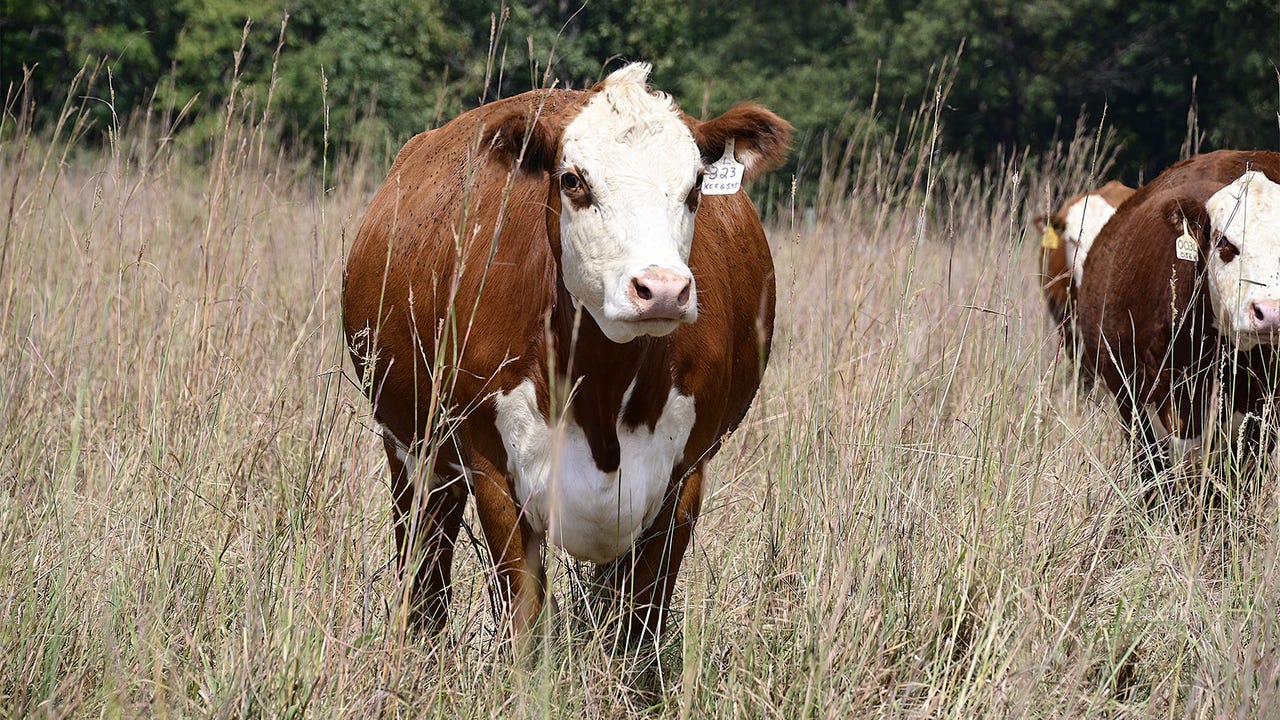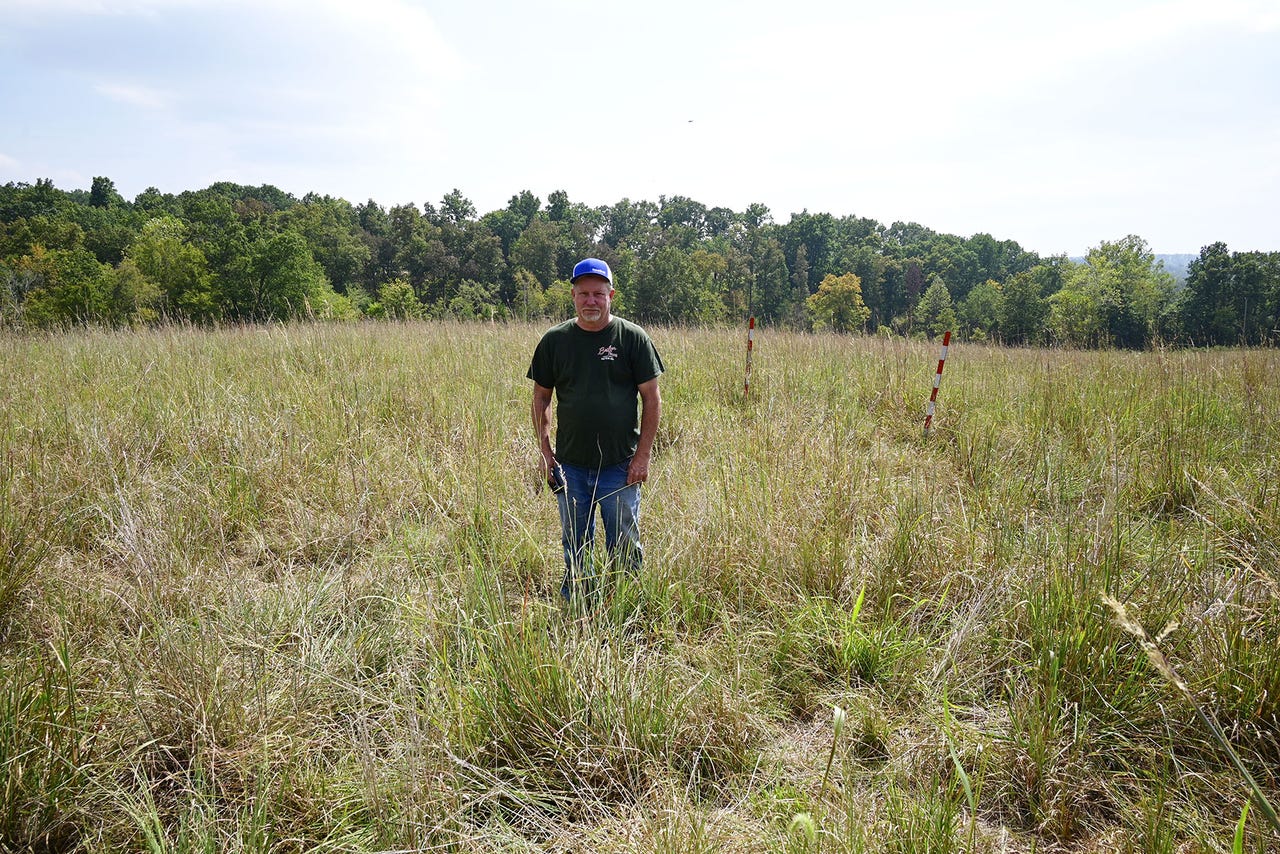Charlie Besher had a good stand of fescue, but his neighbors thought he’d lost his mind when he killed it.
Besher is a cattle farmer in Bollinger County, Mo., and since 2019, he and his wife have incorporated native grass for their cattle to graze.
This change, he says, can be a little scary at first, but it’s well worth it in the end.
Why switch from fescue to native grass?
The Beshers own about 250 acres and rent 1,400 acres. Most of that grass is fescue. Right now, about 35 acres near the house is converted to native grass.
“If you see that slump in the summer of the fescue grass, there isn’t much value there,” Besher says. “The fescue is pretty much dormant.”
So after hearing about planting native grass, it checked all the boxes. One of the biggest benefits is in the quality of the cattle.
“We can get real good gains from this grass,” Besher says. “The animals are nice, filled out, slick-haired. I mean, they’ve just got a great appearance to them.”
Besher also didn’t love feeding his cattle fescue. “The fescue has endophyte in it, which raises their body temperature, restricts their arteries, restricts blood flow,” he says.

But the native grass helps flush the endophyte out of the cattle’s’ system.
Aside from healthier livestock, Besher and the MU/MDC Native Grass Extension Project find that native grass is a great habitat for wildlife.
“We're seeing quail in these fields,” he says. “We got turkeys that nest in these fields every spring. The deer bed down in the winter and fall. The wildlife just flourishes in this stuff.”
Key facts about incorporating native grass
Besher says it’s relatively expensive to start. For his 35 acres of native grass, it costs anywhere from $250 to $350 an acre to establish the grasses. They planted big blue, little blue and Indian grass.
He also says you will have to set the ground you want to plant the native grass on aside for one year. Seed planted in May 2019 was ready for grazing by May 2020. That first year of native grass is also for management.
“You need to be watching it because after those plants get up to 10 to 12 inches tall, you need to be looking for competition out there,” Besher says. “Do whatever you need to do to prevent the canopy from shading out the seedlings.”
Another benefit of native grass is its ability to store carbon in the soil.

He encourages farmers to consider using native grass and reach out to your local Natural Resources Conservation Service office as it can help get the ball rolling.
“Don't be scared to do it,” Besher says. “There's a lot of resources out there to help you do it. You don't have to be a conservationist to plant this stuff. This is a great tool and a cattle producer's toolbox.”
MU Extension has several resources on how to get started with native grasses. Extension officials will be hosting a native grass workshop in Mount Vernon on Oct. 14.